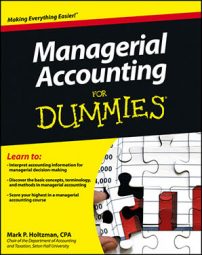In managerial accounting, inventory that comes into a production department must do one of two things: stay in the department or, when complete, move on to the next department. The same holds true for the cost of inventory: Costs must either stay in a department or move on to the next. To keep track of units and costs, managerial accounting uses a four-part document called the cost of production report.
In Part 1: Units to account for, each department needs to account for the number of units that it was given responsibility for, including units in beginning WIP and units transferred in.
The cost of production report first accounts for the number of units in the department’s beginning WIP and transferred into the department during the period.
Suppose a toy factory makes clowns. The Balloon department attaches a set of balloons to each clown and then sends the units over to the next department, which pops the balloons.
The Balloon department started the month of April with 200 clowns, all WIP in need of balloons. During April, it received 2,500 clowns from direct materials. (The company buys these from a factory in China.) That means that the Balloon department had 2,700 units to account for:
Units to account for = Beginning work-in-process units + Units started = 200 + 2,500 = 2,700

